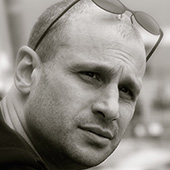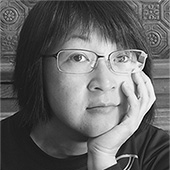Making First Contact
User experience is a term business leaders have been hearing more lately, and delivering better product experiences is something many business leaders now think is strategically important to their success.
Imagine a prospective client—either inside your company or outside, if you are a consultant—has called you up, because they are interested in meeting with you to talk about user experience and how to improve their products. You are preparing to meet with this prospective client in a few days, so you need to draft a UX Plan, covering the activities that will help you better understand their business, review and design for critical user journeys, and evaluate your new designs by testing with users.
Wait a Moment!
Before you go into the meeting with your UX Plan, it’s important to consider how your plan can get all of the stakeholders moving fluidly in one direction when you are
- working on specific designs and deep into designing particular features
- establishing an overall design framework that lets you all work effectively around common design goals
Otherwise, there is a risk that the team might make design decisions in isolation from the bigger picture—and this is where product problems can arise.
One way to get everyone on a team aligned is to run a design workshop. A design workshop sits comfortably in the middle of your UX Plan, taking into account what you’ll discover from both your users and the business as inputs to the design. During a design workshop, you can mash up design and evaluation, working with both the product team and users to achieve a better design.
Creating Design Momentum
Your first meeting with a new client is a nice opportunity to set the tone for how you want to work on the designs together and what you’ll focus on. Here are some questions that should get your conversation started:
- What business are they in? Become intimate with their business. Get them to tell you everything you need to know.
- Who is on the team, and what is the role of each team member? Really get to know the team.
- Where does the team fit into the organization? Who else does the team need to work with to deliver great designs?
- What is their understanding of user experience and design? This is your first real opportunity to get everyone on the same page.
- What are the key user journeys you need to explore? What are the opportunities for you and the product team to be successful together?
- What do they want you to fix? What problems is the company experiencing with their product? How could you turn these problems into design opportunities?
- What problems are their customers or users experiencing with the product? Again, how could you turn these problems into design opportunities?
Driving Design Success
The key driver behind getting answers to these questions on first contact is your gaining the team’s trust. You want to the team to collectively stand back from the disciplines in which they’re working and the internal politics, so everyone can approach the design problem objectively.
A design workshop creates an environment in which stakeholders with different skills can work as one team to deliver a design solution that will help make their product successful. It also creates a formal context in which stakeholders must do their homework to provide the necessary inputs to the design workshop—including doing competitive analysis and collecting call-center data, product issues, and user feedback, to name a few.
Facilitating a Design Workshop
Before you start preparing to facilitate a design workshop, it’s important that you understand what it means to be a facilitator. Your role as a facilitator of this design process is to pass on your UX knowledge, empower the team to take their design forward, and help them understand how this effort fits in with a larger UX strategy. Every question you ask should either help drive conversation or move the team toward a joint understanding of the design.
As a facilitator, you do not always have to provide all of the design solutions, but at the same time, the company has hired you to give them some answers. So it’s important to know
- when to provide expert design direction and when to allow the team to come up with solutions themselves
- how to help the team craft a design solution that makes sense and is better than a single individual’s design solution would have been
- how to coalesce the team’s design thinking into an overall strategy
It’s important to have some design-walkthrough questions ready to help you guide design discussions—for example:
- What is working well?
- What do you want users to do first?
- What are the business goals?
- What issues are we facing?
- How could a design solution translate into larger design principles?
We don’t intend this to be an exhaustive list of questions, but getting such questions answered does present an opportunity to mentor a workshop group and guide them toward something better. It also reinforces that you are working on the design as a team and should not just accept the first few design ideas the team comes up with. You want the group to work toward something great. You want to get people comfortable with failing early and learning from their failures, while having fun in the process.

